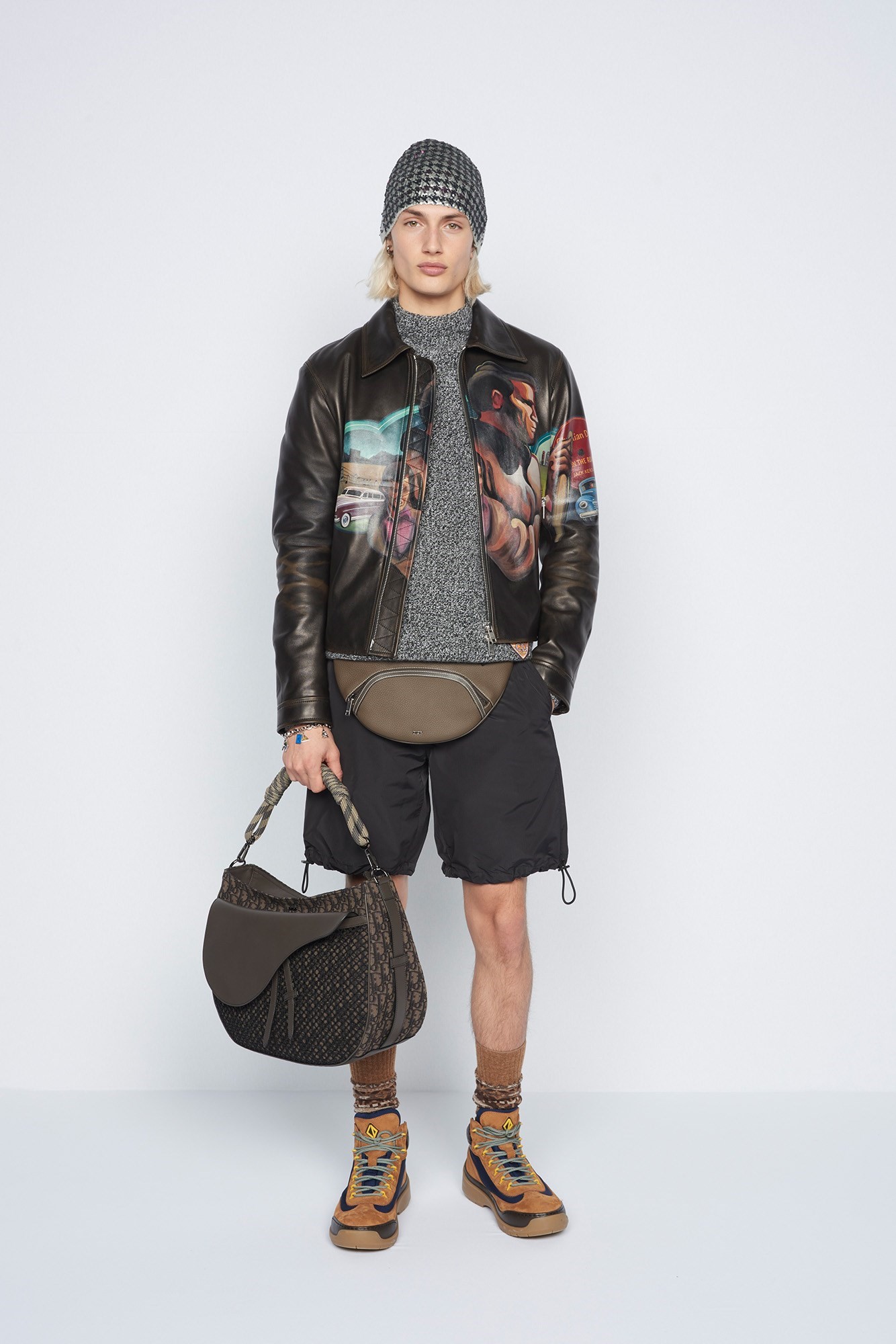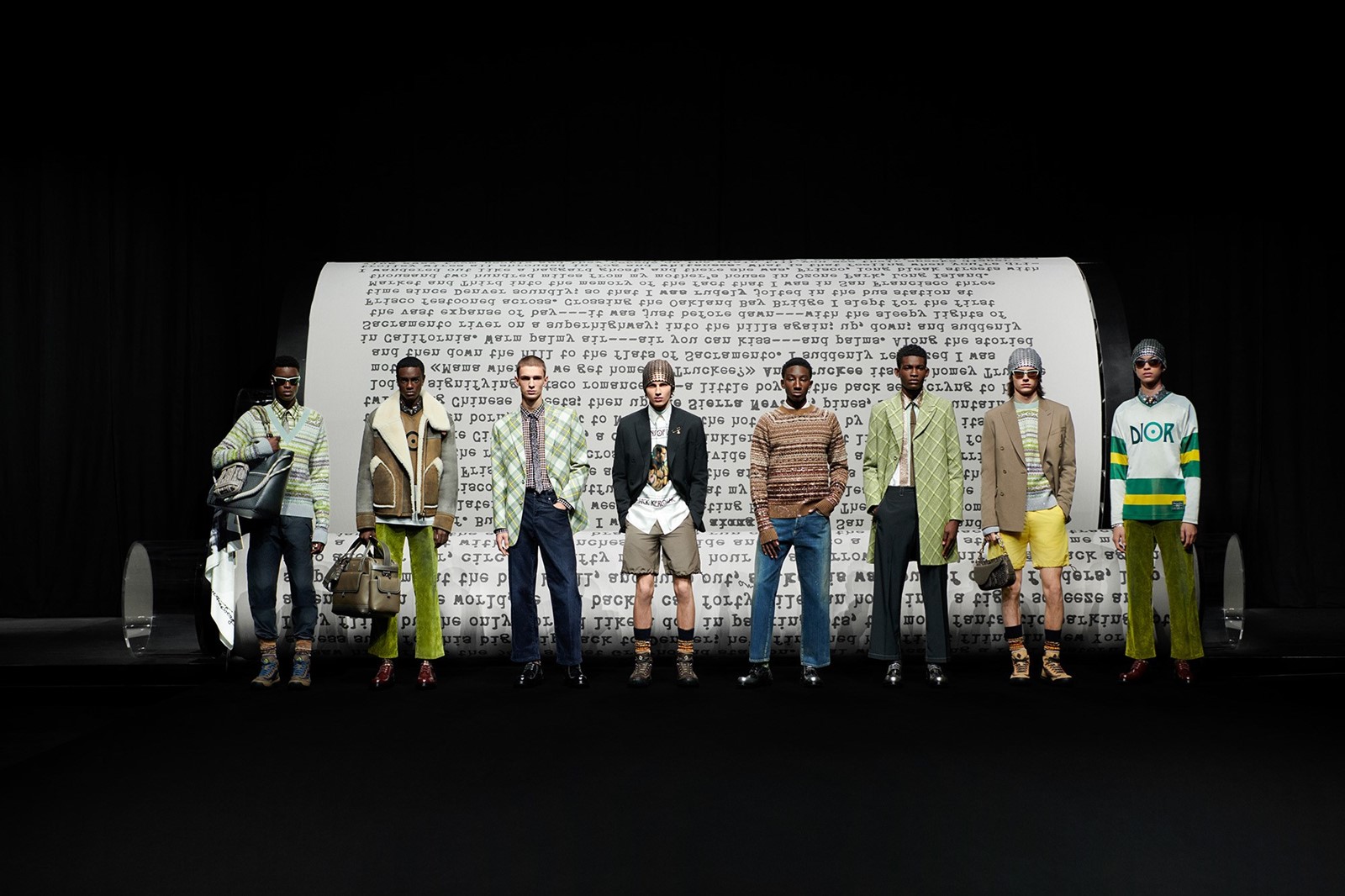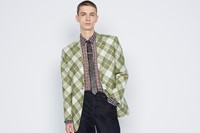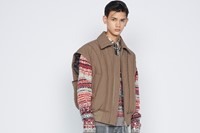For the Spring/Summer 2021 issue of AnOther Magazine Kim Jones, who as artistic director of men’s collections at Dior and of haute couture, ready-to-wear and fur collections for women at Fendi, already has one of the longest titles in fashion, added editor to his resume. His febrile, restless mind shaped our Document section, delving into books that he, as a self-avowed and avid, even obsessive bibliophile, not only collects but covets and consumes. From his library of thousands of rare first editions, he selected a tranche of titles relating to the Beat movement, the mid-20th century American literary school that shifted the way the modern word is written. “I feel what’s interesting is looking at books that altered the way people think, the authors and the audience too,” Jones said. “Pioneering America, freedom and the road and poetry that was groundbreaking for the time.” Jones’ selection from his collection included a hand-typed letter by Jack Kerouac outlining the plot and idea for On The Road, and Kerouac’s mother’s copy of Big Sur.
Those, and other literary works by Kerouac specifically and his Beat cohorts came to life in London – the home of Jones’ library, after all – for Dior’s Autumn/Winter 2022 menswear collection, an homage to Beat and the men who made it. The show was prefaced by an exhibition of just some of Jones’ library, curated to highlight the connections between words and work – book jackets and Dior jackets, if you will. The artwork from first editions were printed or hand-painted, and Jones borrowed the typefaces from some of Kerouac’s first editions (in partnership with his estate, of course) to reconfigure the Dior logotype; even the contrast coloured linings in tailoring wound up looking like end pages, and were woven with phrases from Kerouac’s work. And the show itself literally took place on literature, a macro-scale version of the legendary manuscript of On The Road, a continuous 120-foot scroll here made larger-than-life and unfurled as an opener. A few people messaged me on Instagram after I posted a video: they’d assumed the footage was CGI. Not here.


These Dior clothes were also definitely, defiantly IRL – indeed, they were ample justification for the staging of this show, their physicality resonant in a way a picture couldn’t quite convey. I’m thinking specifically of the knits, glinting subtly as if flecked with lurex (very mid-century) but actually embroidered with thousands of micro-sequins, also glistening on shirt plackets and across checkered knits used for hats and even inlaid into hiking boots. The tailoring, too, was exceptional: relaxed, slouched in ideological keeping with the relaxed nature of American sportswear, many were bias-cut in maxi-checks that recalled American collegiate wear – but also the 1960s styles of Dior itself. And the colour palette of the cardigans, overcoats and tailored blazers could have come from Dior ballgowns: raspberry, milky ivory, chartreuse. The latter, actually, was used for couture jeans – flocked to give a velvety texture. The whole collection was an interplay of delicate, nuanced textures – in person, it felt like the difference between tapping the sterile screen of a kindle and the feel of the fuzz of paper between your fingertips as you turn the pages of a book. Intimacy. They were quiet clothes, crammed with details to be appreciated by the wearers alone. They were, eminently, real.
Beat and Dior seem worlds apart – New World and Old World, specifically. Yet there is a connection to be found in the archives. In 1960, Yves Saint Laurent created a collection titled Beat, in homage to the new literary and cultural movements then re-shaping contemporary mores. It contained, amongst other things, the first leather biker-jacket to be found in haute couture history – a not-so-subtle nose-thumbing at the bourgeoisie establishment – AKA Dior’s clientele of the time – whose soubriquet for teenaged Parisian hooligans was ‘Blouson Noirs’. It was a revolutionary collection that helped get the still 20-something Saint Laurent fired. Age has mellowed its shock: today, a Beat collection doesn’t raise eyebrows, but rather opens hearts.






